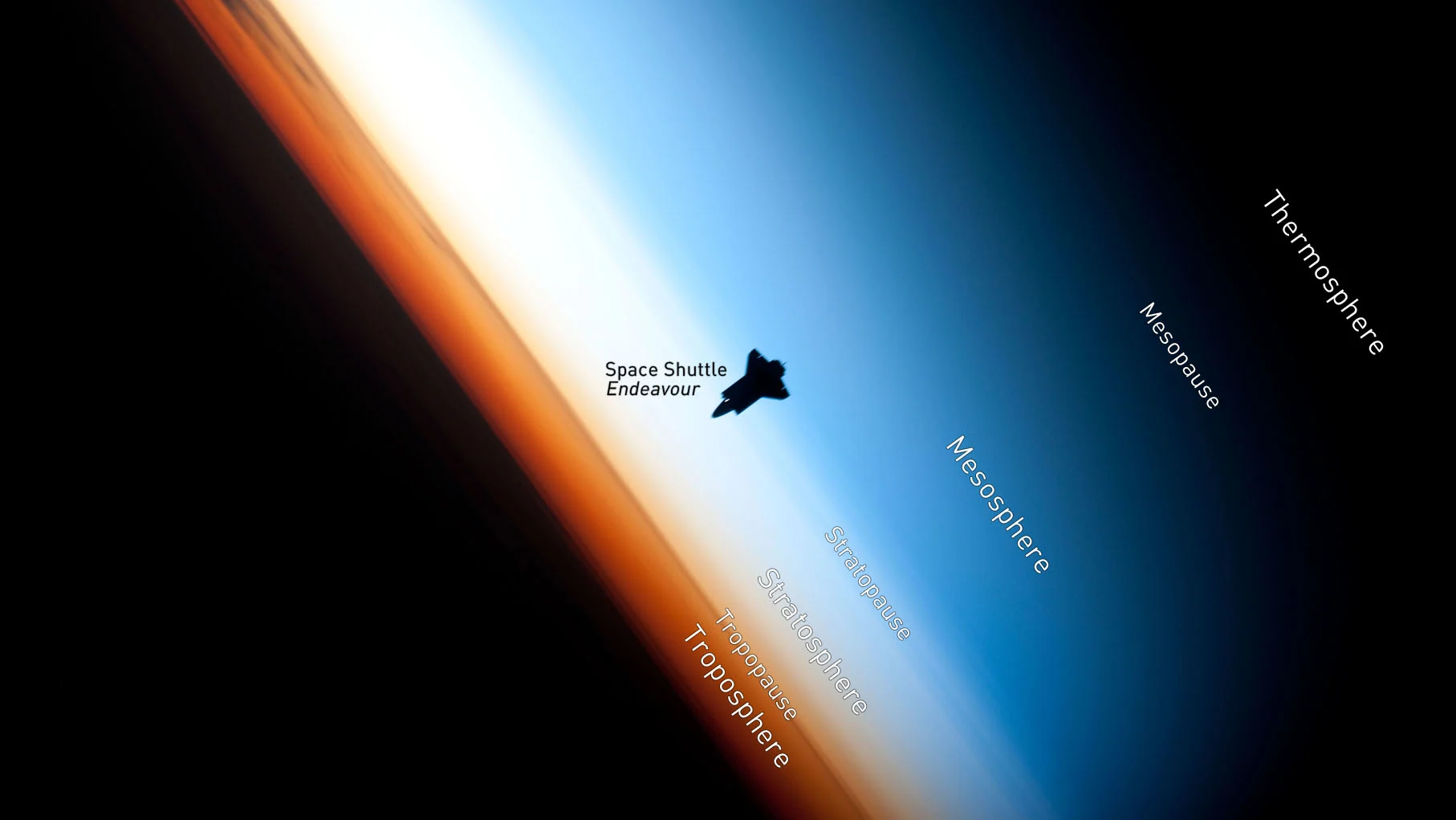
NASA finds mysterious force that lofts Earth's atmosphere into space
This ambipolar electric field is as fundamental to Earth as gravity and the magnetic field, and is the source of the flow of atmospheric ions into space known as the polar wind.
For decades, satellites passing over Earth's north and south poles have experienced a flow of ions from the upper atmosphere into space. Dubbed the 'polar wind', the source of this flow had eluded scientists for years, but now NASA's Endurance mission has finally measured it for the first time.
Up at the edge of space, ionized particles stream out of Earth's atmosphere to be forever lost to the solar system. Some of this flow is simply due to sunlight heating up the thin air at that altitude, giving the atoms enough energy to escape Earth's gravity. We see this same sort of thing occurring on a much smaller scale above a cup of steaming coffee or hot chocolate. Water molecules absorb enough heat energy to escape the surface of the liquid, changing into a vapour that then rises into the air.

This image of the Space Shuttle Endeavour, taken from the International Space Station, shows the different layers of Earth's atmosphere, which have been labelled to more easily tell them apart. The topmost layer, the thermosphere, is where ions from the upper atmosphere escape into the solar system. (NASA/Scott Sutherland)
For the past 80 years or so, satellites could feel and detect this flow of the atmosphere into space, especially at the poles. Data from these satellites revealed that the amount of air escaping from Earth's atmosphere via this 'polar wind' far exceeded what was expected just from solar heating.
Indeed, according to NASA, many of the ions detected flowing along the polar wind show no evidence of having absorbed enough solar energy to escape on their own. These ions should be pulled back down into the atmosphere by gravity, but instead they were streaming out into space at hypersonic speeds.
So, there had to be something else, other than the Sun, driving much of this atmospheric escape.
Based on all the evidence they had, researchers came up with a hypothesis for what was happening. They believed that an extremely weak electric field was being generated high in the atmosphere, and it was this electric field that was lofting the ions higher up than they would normally reach just by the movement of the air. They called this weak electric field the ambipolar field.
The ambipolar field results from solar particles bombarding the upper atmosphere. There, they strike atoms like oxygen and hydrogen, causing them to eject an electron to become ionized. With the ions and free electrons being oppositely charged, they're drawn to one another. The free electrons have too much energy to be captured by the oxygen or hydrogen nucleus. Still, the electric potential between them generates a small electric field that would act as a tiny tether, linking them together.

Energized free electrons and ionized oxygen atoms are shown tethered together by electric fields in this graphic. While gravity pulls the oxygen atom downward, the electron tugs upwards, as it is drawn towards space on the lines of Earth's geomagnetic field. The collective effect of all these tiny electric field tethers forms the overall ambipolar field of Earth. (NASA's Goddard Space Flight Center/Scott Sutherland)
Given how weak this field would be, years would go by before scientists could even approach the level of technology needed to detect it.
It wasn't until May of 2022 that a team of international scientists, led by Glyn Collinson from NASA's Goddard Space Flight Center, were finally able to measure the ambipolar field.
After around eight years of development, Collinson and the team travelled to the Svalbard rocket range, well north of the Arctic Circle. There, they launched the Endurance mission — a small suborbital rocket that flew high up to the edge of the atmosphere to measure the change in electric potential that would result from the ambipolar field.
"Svalbard is the only rocket range in the world where you can fly through the polar wind and make the measurements we needed," study co-author Suzie Imber, a space physicist at the University of Leicester, UK, told NASA.

The Endurance rocket blasts off from the Svalbard rocket range (left). The view from the rocket's camera during the suborbital flight shows the curvature of Earth from 768 kilometres above the ground. (NASA)
As predicted, the sensitive instrument the team had developed detected an extremely weak field, at just over half a volt.
"A half a volt is almost nothing. It's only about as strong as a watch battery," Collinson said in the NASA press release. "But that's just the right amount to explain the polar wind."
According to the researchers, the ambipolar field results in enough outwards force on ionized oxygen atoms to effectively halve their weight due to gravity. For ionized hydrogen atoms (protons), which make up the majority of the particles flowing on the polar wind, the outwards force is over 10 times stronger than gravity.
"That's more than enough to counter gravity," study co-author Alex Glocer, an Endurance project scientist at NASA Goddard, explained. "In fact, it's enough to launch them upwards into space at supersonic speeds."
The overall impact of the ambipolar field not only causes particles and ions to flow out into space through the polar wind, it also causes the upper atmosphere to expand outwards.

This graphic shows both the 'puffing up' of the upper atmosphere due to the ambipolar field (the blue glow surrounding the planet, permeated by bright white dots) and the flow of particles along the polar wind (the bright streaks along the blue magnetic field lines, to the upper right). (NASA's Goddard Space Flight Center)
"Endurance's discovery has opened many new paths for exploration," says NASA. "The ambipolar field, as a fundamental energy field of our planet alongside gravity and magnetism, may have continuously shaped the evolution of our atmosphere in ways we can now begin to explore. Because it's created by the internal dynamics of an atmosphere, similar electric fields are expected to exist on other planets, including Venus and Mars."
Indeed, the ideas behind the ambipolar field may help explain what happened to Mars. The Red Planet likely had an atmosphere similar to Earth in its distant past. However, now the air there is extremely thin, just 1/100th the atmosphere pressure of Earth. An ambipolar field may have played an important role in the loss of the planet's atmosphere to space over time.











